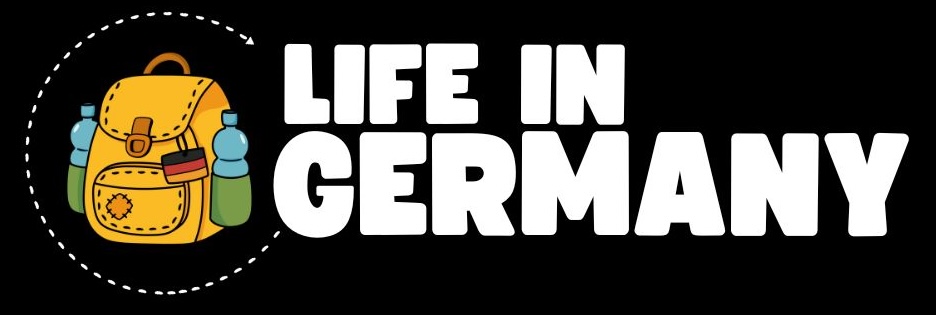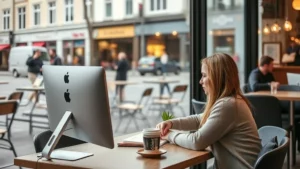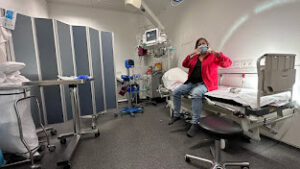There are so many “normal” German things that are not normal for North Americans (Canada specifically). In this blog, we’ll explore 10 hilarious and strange “normal” German things that were indeed not normal for a Canadian like me.
“Normal” German Things That Are Not Normal for North Americans
- 1. Fold-Up Rulers 📏
- 2. Medication in Bubble Packs 💊
- 3. Washing Machines and Dryers in Unconventional Locations 🏠
- 4. Creepy Cellars 🏚️
- 5. Last Names on Doorbells
- 6. Gartenfatine – Urban Garden Allotments
- 7. Open-Faced Sandwiches 🥪
- 8. The Tagesschau – Germany’s Main News Program 📰
- 9. Speed Traps in Cars
1. Fold-Up Rulers 📏
When I first saw these fold-up rulers in Germany, I thought they would have been the best tool to use in the olden days. In Canada, we used rulers that you could pull out and not retract. These fold-up rulers are very typical when you hire a handyman in Germany, and chances are he’s gonna have this rather than one of the retractable ones. I find these so impractical, and every single time you have to be like, “Let me just mention I broke this one, so that’s not even the actual full two-meter stick.”
2. Medication in Bubble Packs 💊
Another thing that surprised me in Germany is how medications are often found in boxes and plastic bubble packs. This is a lot more common in Germany than in Canada. In Canada, prescription medications are often in little clear red plastic containers, and if you get something like ibuprofen or acetaminophen, then you would actually get it in a bottle like this that you simply open the cap. I find the use of bubble packs a lot more unsustainable than the packaging in Canada.
3. Washing Machines and Dryers in Unconventional Locations 🏠
In Germany, the placement of washing machines and dryers is one of the many bizarre things I have found in Germany. In Canada, it’s common to have them in the basement or in a dedicated laundry room. However, in German cities, it’s not unusual to find washing machines and dryers in unconventional locations such as communal areas, kitchens, bathrooms, and even bedrooms. In my apartment, we had to place the dryer in the bedroom because it didn’t fit through the bathroom door. It’s all about making things fit in German homes!
Communal Washers and Dryers in the Cellar
In Germany, it’s not uncommon to come across communal washers and dryers in the cellar of residential buildings. This setup is quite different from what I was accustomed to in Canada, where each household typically has its private laundry facilities. The concept of communal laundry facilities was initially surprising to me, but it’s a common practice in German living spaces.
4. Creepy Cellars 🏚️
One aspect of German living that caught me off guard is the use of cellars, which I find quite different from the concept of basements in Canada. In German houses, cellars are often utilized for storage and utility purposes rather than being fully furnished living spaces. This was a stark contrast to my experience in Canada, where basements are commonly used as recreational areas for activities like playing games, watching TV, and hosting gatherings.
Seller Spaces vs. Basements
The distinction between seller spaces and basements in Germany and Canada is quite significant. While basements in Canada are often considered extensions of the living space, seller spaces in Germany are primarily used for storage and utility functions, contributing to their somewhat eerie atmosphere.
5. Last Names on Doorbells
In Germany, it’s common to have last names on doorbells, whether in a massive city or a small one. This practice is quite different from what I was used to in Canada, where last names are not typically displayed on doorbells or the front of houses. In Canadian apartment buildings, there’s usually a number system, with a directory to find the resident’s last name. The placement of street addresses is also different, with the number coming after the street name in Germany, in contrast to Canada where it comes before.
6. Kleingartenverein – Urban Garden Allotments
In Germany, the concept of a Kleingarten, or urban garden allotment, is quite fascinating. Due to limited space in big cities, people often have small balconies and limited backyard space. The Kleingarten provides individuals with the opportunity to rent their own garden space and a small cottage hut. This space allows for activities such as barbecuing, gardening, and socializing with friends. It’s a unique way to enjoy a bit of greenery and create a personal oasis within the city.
7. Open-Faced Sandwiches 🥪
In North America, we often prefer closed-faced sandwiches for their practicality, but in Germany, open-faced sandwiches are quite common. Initially, I found them impractical as everything seemed to fall out. However, I’ve come to appreciate that it allows for a healthier balance with less bread and more toppings like vegetables or meat stacked on a single slice.
8. The Tagesschau – Germany’s Main News Program 📰
In Germany, the Tagesschau is the main news program where all the news is consolidated. Unlike in North America, where multiple channels offer various news programs with different political biases, in Germany, the Tagesschau provides a centralized source of news. This makes it convenient to know exactly when and where to tune in for the news, offering a more streamlined and predictable news-watching experience.
9. Speed Traps in Cars
In Germany, it’s not uncommon to encounter speed traps in the back of cars while driving on the highway or roads. This practice of catching speeding vehicles using cameras installed in cars is quite different from what I was used to in Canada. Have you ever experienced being caught speeding by a camera in a car while driving in Germany? Share your experiences with us!
Made with VideoToBlog





